Tritones are one of the most powerful and versatile intervals in music.
They can create intense tension, add a dark or mysterious vibe, and help you transition smoothly between different chords.
As well as helping you lay down unique melodies and harmonies, they have the ability to completely transform the emotional impact of your tracks.
As a producer, if you know how to manipulate them correctly, tritones can add a layer of complexity and sophistication that sets your music apart.
That’s exactly why we’re breaking down everything you need to know about tritones, like:
- What tritones are ✓
- The history & why they’re considered devil’s music ✓
- Tritone intervals and frequencies ✓
- Locating tritones within scales (major scale/minor scale) ✓
- The role of tritones in the Circle of Fifths ✓
- How tritones create tension and release ✓
- Scale degrees, key signatures, modulation, etc. ✓
- Using tritones in chord progressions ✓
- Layering tritones for unique textures ✓
- Tritone substitution techniques ✓
- What sound a tritone makes ✓
- Much more about tritones ✓
After reading this article, you’ll know everything about tritones, from the history and breakdown to more modern techniques to help your sounds shine.
This way, you’ll be able to take advantage of the power of tritones to create tension, build anticipation, and successfully resolve your music with some serious impact.
By the end, use tritones creativity to create innovative chord progressions and textures like a true professional.
So, let’s dive in…
Table of Contents
What Are Tritones?
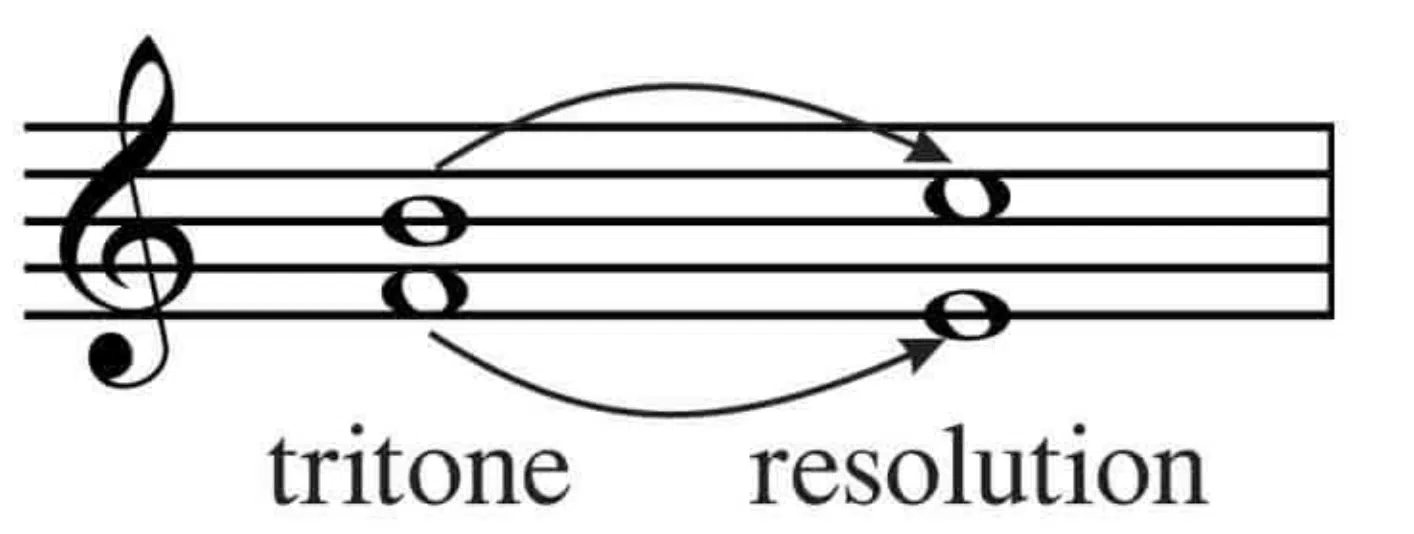
Tritones, often called the “Devil’s Interval,” are actually some of the most dissonant sounds in music.
They span across three adjacent whole tones (three whole steps) or six half-steps (six semitones), which creates a tension that is both unsettling and extremely powerful.
Tritones occur naturally between the fourth and seventh scale degrees in a major scale 一 forming augmented fourths or diminished fifths.
This interval is famous for its sinister sound, often referred to as “Diabolus in musica,” which means “the Devil in music.”
From classical to rock music, tritones have been used throughout history in countless ways to bring out feelings of unease or anticipation.
Don’t worry, we’ll be breaking down everything about tritones in detail throughout the article so you can really get a solid understanding.
A Brief History of Tritones
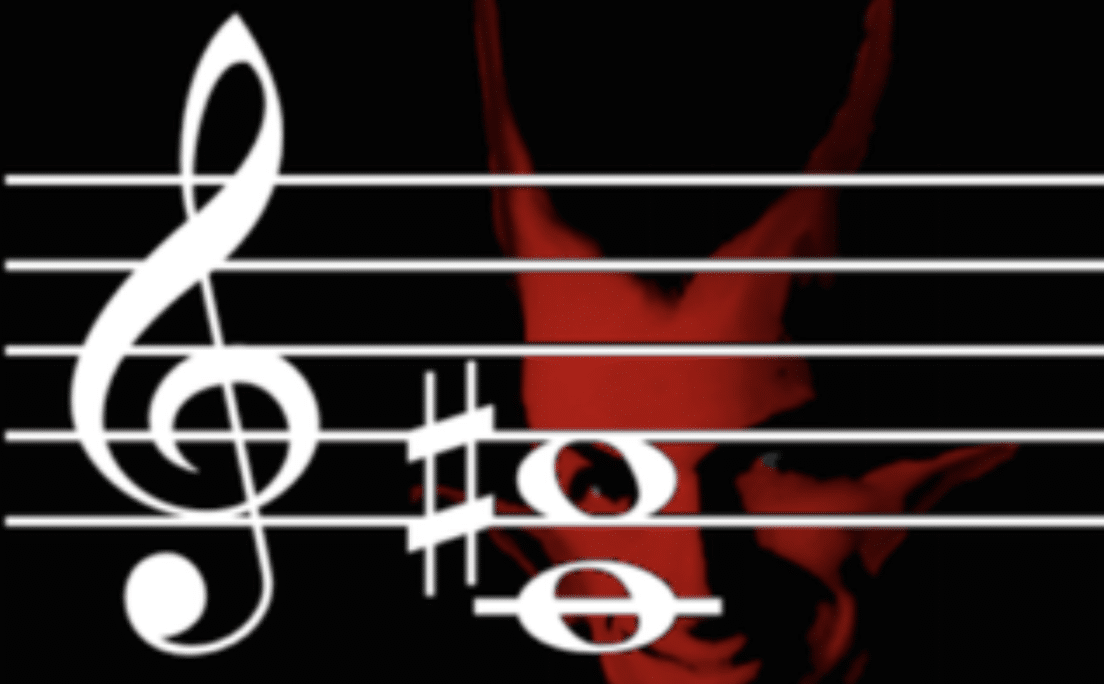
Going way back, the tritone was forbidden in early Church music (no joke) because of its dissonant sound that was deemed devil music.
During the Middle Ages, this interval was considered so unsettling that it was dubbed the “Devil’s Interval” and was avoided completely in all compositions.
It was too eerie and disruptive and made people way too uncomfortable.
However, composers like J.S. Bach began to explore its potential 一 using tritones to create tension in classical music (and thank God for that).
It brought depth and drama that people never heard before.
In more modern times, rock music, like in songs like Jimi Hendrix’s “Purple Haze,” has embraced the tritone for its edgy, rebellious sound.
The interval has evolved from a banned musical interval to the ideal tool for creating intense, dramatic music.
That just goes to show how thinking outside of the box can really take you places, especially in the music production world.
The Relationship Between Tritone Intervals and Frequencies
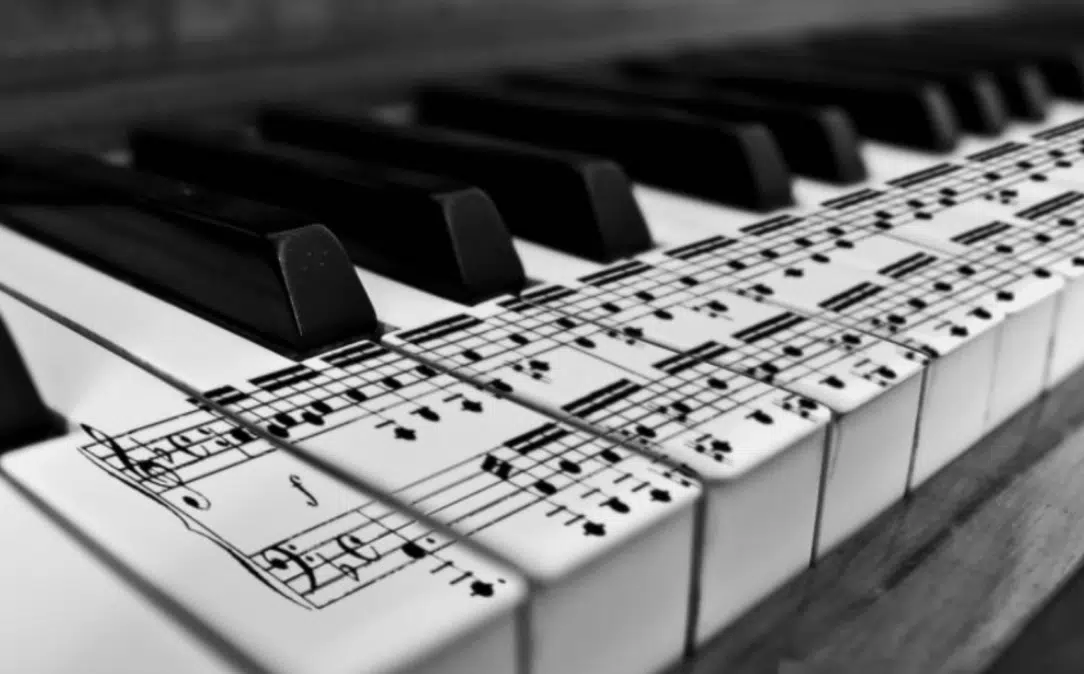
Understanding the relationship between tritone intervals and frequencies will really help you see why it creates such a dissonant sound.
A tritone interval (whether it’s an augmented fourth or a diminished fifth) divides the octave into two equal parts, creating a frequency ratio of roughly 45:32.
For example, in the key of C major, the tritone formed between the notes F and B divides the octave in half, leading to a sharp contrast that our ears perceive as super unsettling.
That’s why it was once considered the devil’s interval, and this dissonance is not just a matter of cultural perception…
It’s rooted in the physics of sound, where the frequencies of the two notes clash in a way that creates a tension-filled, unresolved sound.
As a result, tritones have become a key element in music theory for creating a sense of instability and anticipation.
Side note, if you want to learn all about music theory, we’ve got you covered.
Tritones in Music Theory
Tritones play a huge role in the music theory world, especially when it comes to exploring scales and harmonic structures. By understanding how tritones interact within different scales and chords, you can create some seriously dynamic, tension-filled tracks. So, let’s break it down.
-
Tritones Within Scales: Locating Them
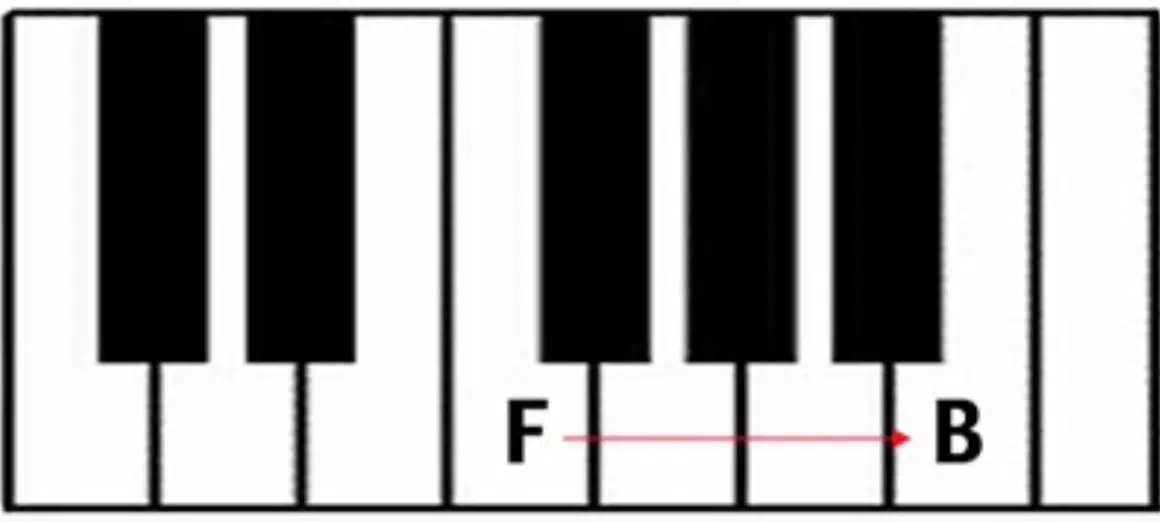
Tritone in C Major
Tritones are present in both major and minor scales, shaping the harmonic and melodic character of the music in a big way.
In the C major scale, the tritone interval is found between the fourth degree (F) and the seventh degree (B), forming an augmented fourth.
This dissonant interval creates a strong sense of instability, which drives the music toward resolution.
When it resolves to a perfect fifth or a major chord, like moving from B to C in the key of C major, it brings a sense of closure and completeness to the progression 一 making the music feel satisfying and grounded.
In minor scales, tritones are just as important.
For example, in the A natural minor scale, the tritone appears between the second degree (B) and the flattened sixth degree (F), adding a darker, more dramatic edge.
It’s perfect for creating songs that you want to be very haunting or eerie.
Whether you’re working with a major or minor scale, knowing where tritones are located will help you use them to enhance the emotional impact of your tracks.
You’ll be able to create more complex, evocative music that people won’t soon forget.
Pro Tip
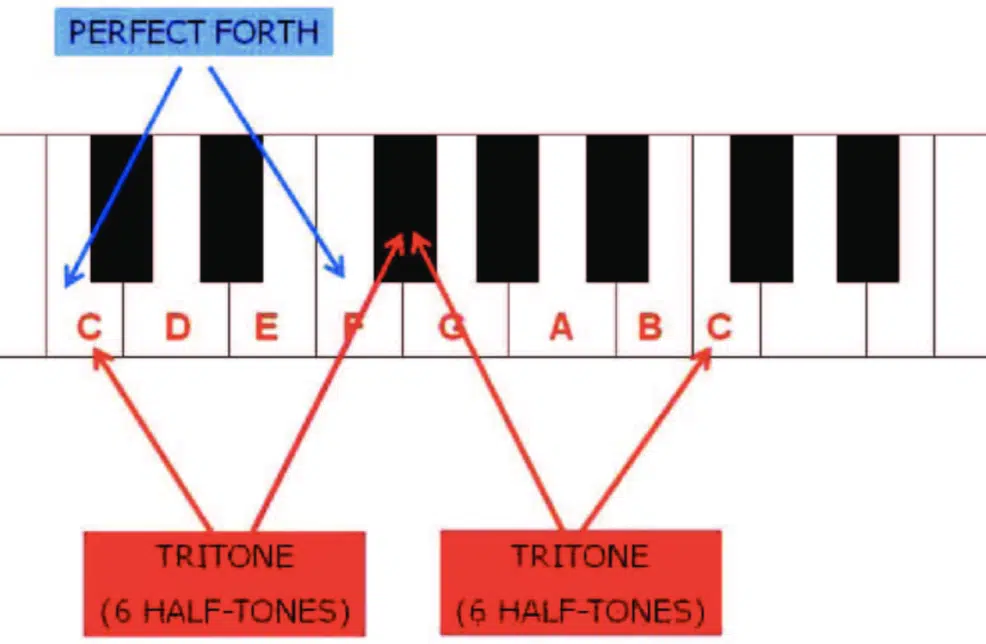
When working within a diatonic scale, keep in mind that tritones can be used to create subtle variations without altering the overall harmonic structure.
By shifting one note in a tritone by a half step, you can introduce a surprising tension while still using the exact same notes from the diatonic scale.
For instance, if you’re in C major and have a tritone between F and B, try moving the B down by a half step to Bb…
This creates a more nuanced dissonance but still stays true to the other notes that belong to the C minor diatonic scale (cool, right?).
It’s all about unexpected complexity.
Side note, if you want to learn all about the diatonic scale, we got you.
-
The Role of Tritones in the Circle of Fifths
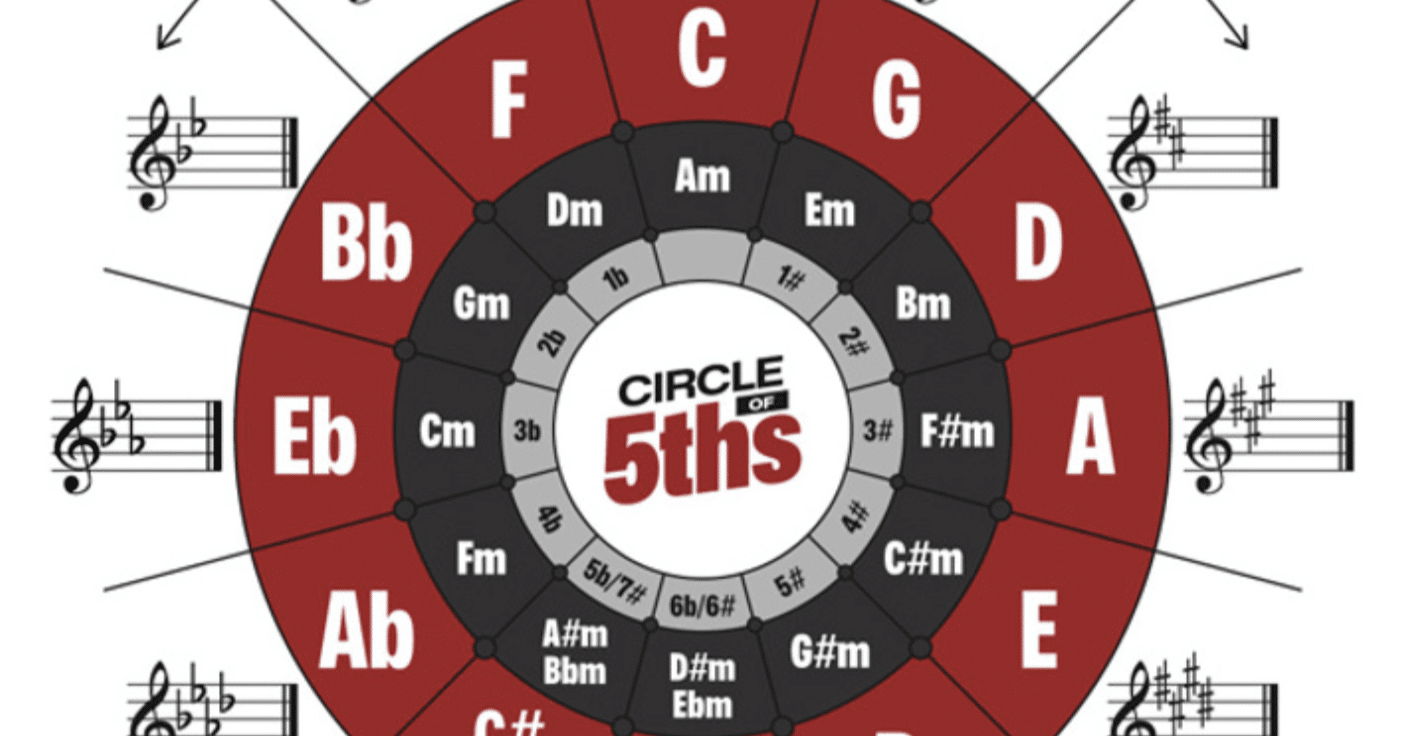
The Circle of Fifths is famous in the music theory realm for illustrating the relationships between the twelve keys in Western music.
Each key in the circle is a perfect fifth apart from the next, forming a sequence that helps musicians understand key signatures and modulations.
But did you know that tritones introduce a significant tension within this structure, especially when moving between closely related keys?
For example, in the C major key, the tritone interval between F and B creates a strong dissonance that resolves (naturally) into the dominant chord, G7.
By substituting the G7 with its tritone equivalent, Db7, you can introduce unexpected harmonic shifts that add depth to your tracks.
This technique, known as tritone substitution (which we’ll break down later), is widely used in old school sounds to create epic and dynamic progressions.
Understanding how tritones function within the Circle of Fifths will help you:
- Create smoother key transitions
- Explore advanced harmonic structures
- Add layers of intrigue to your music
For example, when you’re modulating from one key to another, a tritone can act as a bridge between the two 一 making the transition smoother and more interesting.
Let’s say you’re moving from C major to A major…
By using an E7 chord (which contains a tritone between G# and D), you can pivot from one key to another flawlessly, with the tritone leading the way to the shift.
This kind of modulation can add a surprising twist to your music, keeping the listener engaged and adding complexity to your track.
Remember to get creative and think outside the box because the possibilities are endless.
The Role of Tritones in Harmonic Structures
Tritones are not only important in scale construction as we just covered, but they also are key players when it comes to shaping harmonic structures. By understanding their function in various chords, you can manipulate tritones to create tension, resolve dissonance, and add harmonic complexity to your music. Let’s get into it.
-
Tritones in Dominant Seventh Chords
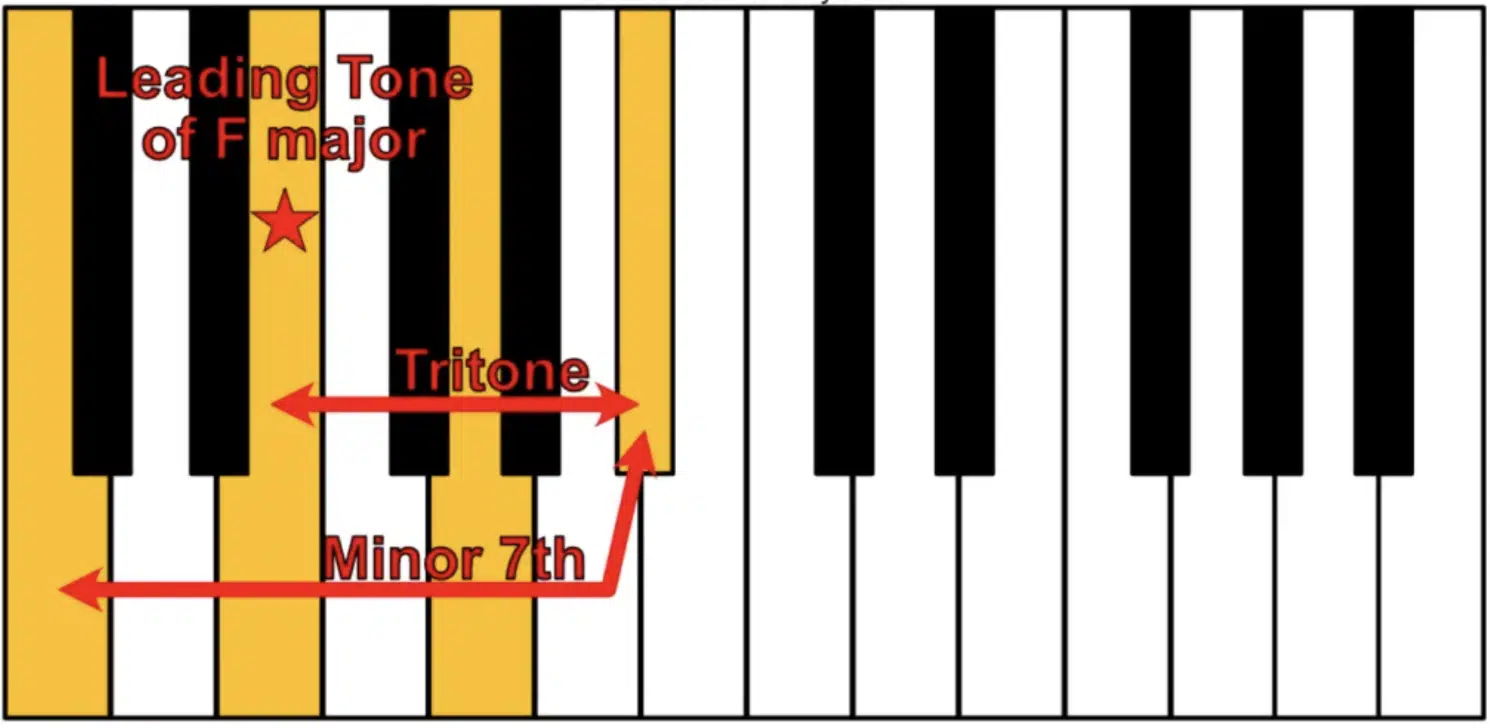
C Dominant 7th – C7
Tritones and tension should basically be synonyms, especially when it comes to dominant seventh chords, which are key to creating strong harmonic conclusions.
In a dominant seventh chord, the tritone occurs between the third and the flattened seventh scale degrees.
For example, in a D7 chord, which acts as the dominant in the key of G major, the tritone is between F# (the major third) and C (the flattened seventh).
This tritone creates a tension that naturally wants to resolve down to the G major chord, making the resolution feel very satisfying and complete.
NOTE: To help you really master this technique, try playing the D7 chord followed by G major, and listen to how the tritone drives the resolution.
Experiment with extending the dominant seventh chord to include the ninth (D9), which introduces another layer of tension and adds fullness to the harmonic progression.
-
Tritones in Altered Chords

A7b9 Chord; Tritone = Between C# and G
Altered chords are used to create even more tension and complexity, so tritones and altered chords are like a match made in heaven.
Altered chords typically modify the fifth or ninth of a dominant chord, which brings more tritones that intensify the dissonance to the table.
For example, in an A7b9 chord, which can function as a dominant in the key of D minor, the tritone occurs between C# (the major third) and G (the flattened seventh), while the added b9 (Bb) increases the tension even further.
This tritone-packed devil’s chord then resolves powerfully to D minor, with the dissonance making the resolution feel more impactful.
NOTE: To take this to the next level, try using an A7#5b9 chord, where the augmented fifth (E#) adds an extra layer of dissonance.
It’ll create an intriguing, complex sound that sets up the resolution perfectly.
Remember to play around with resolving altered chords to unexpected keys, using the tension created by the tritones to really lay the groundwork for some surprising harmonic shifts.
-
Incorporating Tritones into Chord Progressions
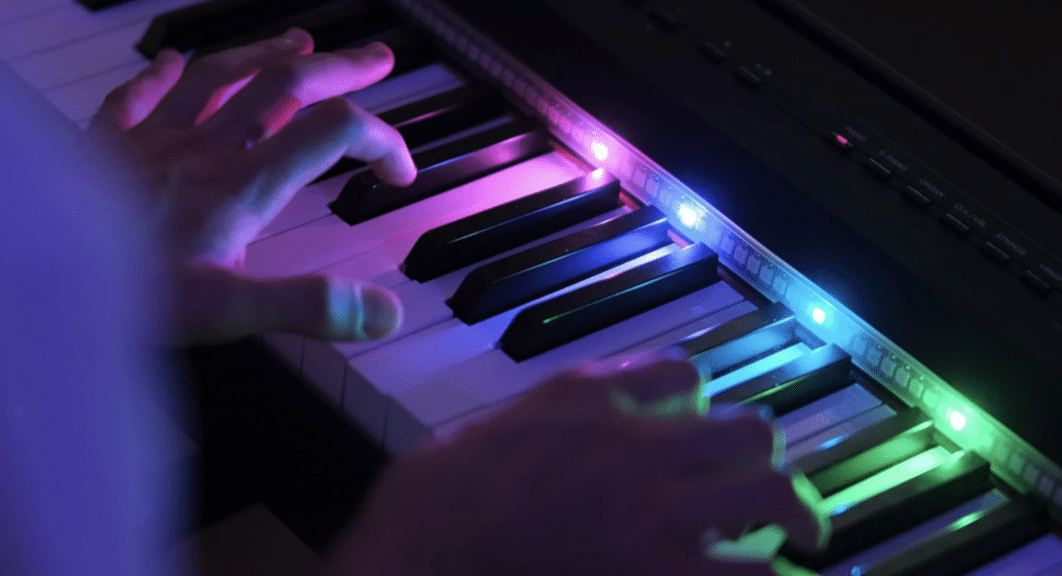
Incorporating tritones into your chord progressions is a powerful way to add tension, dimension, and drama to your tracks.
Since they create such a strong pull towards resolution, it makes them perfect for transitions between chords that need some extra impact.
For example, you can use the tritone interval between F and B in the key of C major to lead into a C major chord, making the ending feel more satisfying.
This technique is especially useful in genres like rock (especially Black Sabbath) and pop, where building and releasing tension is key to creating memorable hooks and riffs.
You might also experiment with using tritones to create unexpected shifts in your progressions, adding a darker or more intense edge to your music.
Like, for instance, you can throw in a tritone between the root and the fifth of a chord to create a sudden, dissonant twist that resolves back to a more stable harmony.
By carefully placing tritones within your chord sequences, you can create progressions that keep listeners hooked and invested in your music.
Pro Tip

The tritone, often found as an augmented fourth or diminished fifth as you now know, spans six half-steps, creating an interval that sounds unstable and unresolved.
This tension is why tritones are often used in dominant chords, which naturally lead to a resolution, usually to the tonic chord.
For example, in the famous “Maria” from West Side Story, the melody prominently features a tritone that creates a dramatic sense of longing before resolving ideally.
Remember, tritones are all about tension and release (no wonder it’s considered Devil’s music because it feels like temptation).
Tritone Tips for Producers
Learning how to use tritones like a master can really elevate your music, giving it a unique edge. So, to wrap things up, let’s break down some expert tips and techniques to help you make the most out of tritones in your own tracks.
-
Layering Tritones for Unique Textures
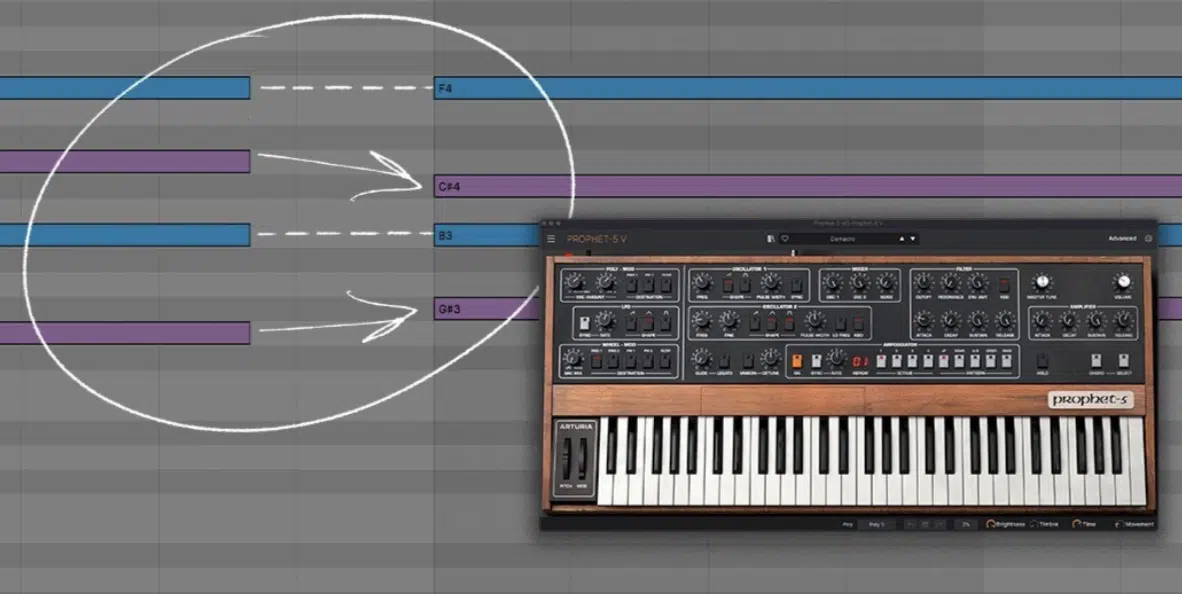
If you want to add some extra depth, intrigue, and allure, try layering tritones for some super unique textures.
For example, try layering a tritone interval, such as an augmented fourth, on top of a sustained bass note to add tension to the lower end of your mix.
You can also place a tritone between two synth layers:
- One playing a root note
- The other playing a tritone above it
It can create a gritty, dissonant sound perfect for a build-up or a drop in a trap beat.
Experiment with using a tritone in the middle of a chord, like playing a diminished fifth between the third and fifth of a minor chord, to give the chord a darker, more complex feel.
By playing around with these layering techniques, you can introduce fresh, unexpected textures that make your music stand out over the competition.
-
Avoiding Overuse: When Less is More

While tritones are great for adding tension, using them too often can overwhelm your track and reduce their impact, and you definitely don’t want that.
You’ll hear tritones in key moments, like a pre-chorus or breakdown, and for good reason because creating maximum tension before a big release is their whole thing.
For example, you might introduce a tritone in the lead melody right before a drop, then resolve it to a more stable interval like a perfect fifth/perfect fourth when the drop hits 一 making the drop feel even more powerful.
So if we’re talking EDM, it’s perfect for that.
Also, remember to use them sparingly in the background elements, like a pad or atmospheric layer, rather than in every chord or melody.
This will keep the overall sound balanced.
By being selective about where and how you use tritones, you can make sure they have the desired impact without overpowering your track (which is key).
Tritone Substitution: Breaking it Down (Bonus)
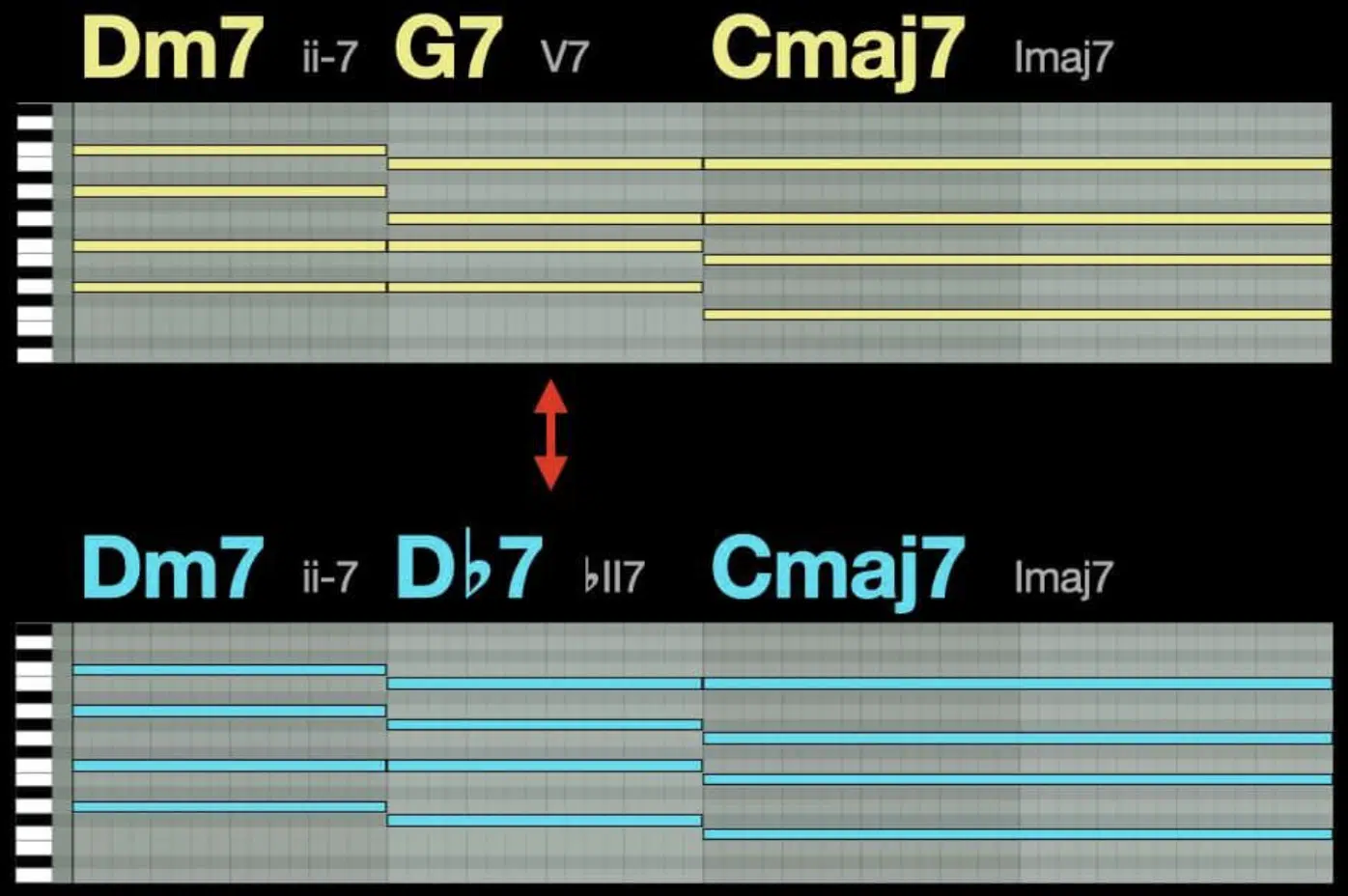
Tritone substitution is a powerful technique where you replace a dominant chord with a chord that is a tritone away.
For example, if you have a progression that moves from G7 to C major, you can use a tritone substitution by replacing the G7 with Db7.
This creates an unexpected yet smooth transition to the C major chord.
Tritone substitution works well because it still leads to the same resolution, but it adds a fresh twist to the progression, which is always great.
You might also use a tritone substitute in place of a dominant chord to move to a new key or create a more complex harmony.
You’ll hear in a jazz or blues tune the tritone substitution being very common, but it works in other genres too, like hip-hop and pop, where you want to surprise the listener with a new sound.
Remember, only one tritone can substitute for a dominant chord in any given progression, and knowing when to use a tritone substitute can make your sounds shine.
NOTE: You can even explore using the minor third as part of the tritone substitute to add even more tension and interest.
Tritones: Final Thoughts
Tritones are some of the most powerful tools in a music producer’s arsenal, if you know how to use them, that is.
They have the power to create tension, add depth, and drive the overall emotional vibe of your tracks as we talked about today.
Plus, as you now know, you can use tritones to create unexpected chord progressions and intense moments if you get creative.
To take your music production skills even further and want to learn more about tritones, you’ve got to download the most legendary MIDI Chords Pack available.
With over 1,200 drag-and-drop MIDI files, this pack gives you access to a complete collection of fundamental chords and progressions.
This makes it an invaluable resource for any producer 一 helping you to focus on making amazing music without getting lost in complex music theory.
As a bonus, this pack includes a 15-page walkthrough PDF that guides you on how to maximize its potential, along with 20 premium Serum presets specifically designed to complement these chords.
They’re perfect for experimenting with the tritone concepts you’ve learned, helping you create emotionally-driven, captivating tracks.
Now that you have a solid understanding of tritones, you can start throwing them into your tracks to create something truly unique.
Just remember to keep pushing the boundaries, and let tritones bring that extra edge to your tracks.
Until next time…







Leave a Reply
You must belogged in to post a comment.